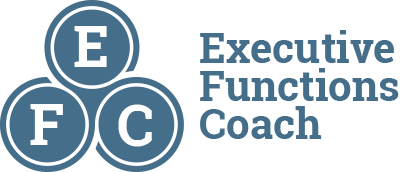Embracing a Multimodal Learning Style: The Balanced Approach
In the dynamic world of education, the question of the best learning style comes up frequently. As an Executive Functions (EF) coach, I firmly believe that the most effective type of learning strategy is a multimodal approach. This style balances students’ preferences with the nature of the subject matter. It not only caters to different learning preferences but also aligns with the specific requirements of different subjects. Let’s delve into the psychology of learning styles, optimal subject approaches, and the crucial balance between skill and challenge.
The Psychology of Learning Styles
Understanding the psychology of a multimodal learning approach is paramount in creating an engaging and motivating educational experience. Research indicates that when students engage in their preferred learning style, their motivation and engagement levels significantly increase. According to a study published in the “Journal of Educational Psychology,” students who were taught using their preferred type of learning showed a 21% improvement in their test scores compared to those who were not.
Statistics and Research:
- Increased Engagement. A survey by the National Training Laboratories found students who preferred hands-on learning styles retained 75% of the information through practice compared to 10% through reading.
- Motivation and Satisfaction. The VARK model shows that students taught in their preferred type of learning preference report higher satisfaction and perseverance through challenging material.
Subject Matter and Different Learning Styles
Each subject has its unique characteristics, necessitating different learning styles to effectively grasp and retain the information.
- Mathematics and Science. These subjects often require logical and analytical thinking. Therefore, a combination of visual and kinesthetic learning improves retention and understanding. Visual aids like charts, diagrams, and interactive simulations can enhance understanding. Kinesthetic learning, through hands-on experiments, also plays a crucial role.
- Languages and Humanities. These subjects benefit from an auditory learning style such as discussions, storytelling, and debates. Reading and writing learners excel through extensive reading and essay writing.
- Arts and Physical Education. The type of learning style that is beneficial in this case is kinesthetic learning. Practice, movement, and physical involvement help in mastering these subjects.
The end goal of each subject also influences which of the different learning styles is optimal. For instance, mastering a language involves conversational practice (auditory) and writing exercises (reading/writing). While excelling in mathematics may require solving numerous problems (kinesthetic) and understanding theories through visual representations. Each learning modality has its time and place in a student’s tool box.
The Structural Balance Between Skill and Challenge
A fundamental principle in effective use of different learning styles is maintaining a balance between the difficulty of tasks and the student’s skill level. There is a concept known as the Zone of Proximal Development (ZPD). It explains that the most effective type of learning style is when students are challenged just beyond their current abilities but not to the point of frustration.
Key Points:
- Avoiding Boredom. A learning style that is too easy does not engage students, leading to boredom and a lack of motivation.
- Preventing Overwhelm. Conversely, learning preferences that are too difficult can lead to anxiety and a sense of helplessness, causing disengagement.
As an EF coach, the type of learning style I use involves a careful analysis of the situation, skills, challenges, and structures that work best for the student. I identify the student’s current skill level and gradually increase the challenge presented through different learning styles. This keeps each student within their ZPD, fostering a productive and motivating learning environment.
Metacognitive Awareness to Independently Identify the Type of Learning Needed
An essential aspect of my coaching philosophy is teaching students how to identify and utilize their learning styles metacognitively. This self-awareness empowers them to adapt their study strategies to different subjects and challenges, promoting lifelong learning skills.
Strategies for Developing Metacognitive Skills:
- Self-Reflection. Encourage students to reflect on their learning experiences and identify which type of learning strategy worked best for them.
- Goal Setting. Teach students to set specific, achievable goals and plan the steps needed to reach them. Encourage each student to experiment with different learning styles for each situation.
- Self-Monitoring: Help students develop the habit of regularly checking their progress and adjusting their learning preferences as needed.
An EF Coach Can Help You Identify Your Optimal Learning Styles
A multimodal learning strategy, tailored to both student preferences and the specific demands of each subject, is the key to effective and engaging education. By balancing the level of skill and challenge and fostering metacognitive awareness, we can create a different learning style that not only meets the needs of students but also empowers them to take control of their educational journey. As an EF coach, I am committed to helping students discover and harness their optimal learning styles, ensuring they achieve their full potential.
Boost your learning potential! Discover your unique style and study smarter with personalized EF coaching. Achieve better results and unlock lifelong learning skills. Contact us today for a free consultation!


